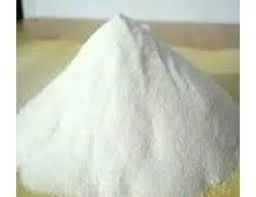
Dec . 17, 2024 20:23 Back to list
hpmc cmc
Understanding HPMC and CMC Key Components in Pharmaceutical and Food Industries
Hydroxypropyl Methylcellulose (HPMC) and Carboxymethyl Cellulose (CMC) are two cellulose derivatives widely used in various industries, particularly in pharmaceuticals and food processing. Their unique properties and functionalities make them essential components in the development of various products. This article explores the significance, applications, and differences between HPMC and CMC.
Hydroxypropyl Methylcellulose (HPMC)
HPMC is a non-ionic, water-soluble polymer derived from cellulose. It is obtained through the chemical modification of cellulose, which imparts several valuable attributes. HPMC is characterized by its ability to form gels, thicken solutions, and act as an emulsifier. These properties make it an indispensable additive in many formulations.
One of the primary uses of HPMC in the pharmaceutical industry is as a binder and film-forming agent in tablet formulations. It improves the mechanical strength of tablets while ensuring the controlled release of active ingredients. This is crucial for creating sustained-release medications that maintain therapeutic levels over extended periods.
In addition to its role in pharmaceuticals, HPMC is also utilized in the food industry as a thickening agent, stabilizer, and emulsifier. It can enhance the texture and mouthfeel of products like sauces, dressings, and baked goods. The versatility of HPMC makes it suitable for various dietary applications, including gluten-free and low-calorie foods, catering to modern dietary preferences.
.
Carboxymethyl Cellulose, like HPMC, is another cellulose derivative that is soluble in water. CMC is produced by the alkali treatment of cellulose, followed by the introduction of carboxymethyl groups. This modification results in a highly viscous product that exhibits excellent thickening and stabilizing properties.
hpmc cmc

In the pharmaceutical realm, CMC is primarily used as a thickening agent and stabilizer in suspensions and emulsions. Its ability to enhance viscosity helps ensure uniform distribution of active ingredients, providing more consistent dosing. Furthermore, CMC is often employed as a binding agent in tablet formulations, playing a critical role in achieving the desired hardness and disintegration time.
In the food industry, CMC is highly valued for its ability to retain moisture, improve texture, and extend shelf life. It is commonly found in ice creams, sauces, and gluten-free baked goods. CMC's water-holding capacity and ability to stabilize emulsions make it an essential ingredient in low-fat and reduced-calorie products, appealing to health-conscious consumers.
Key Differences and Similarities
While HPMC and CMC share similarities as cellulose derivatives with thickening and stabilizing properties, they possess distinct characteristics. The primary difference lies in their chemical structure and functional groups. HPMC is a non-ionic polymer, while CMC is an anionic polymer due to the presence of carboxymethyl groups. This difference influences their solubility, viscosity, and interactions with other components in formulations.
Moreover, HPMC has a higher tolerance for varying pH levels and ionic strengths, making it suitable for a broader range of applications. In contrast, CMC is more affected by ionic strength and can form gels in the presence of certain ions, which may limit its use in specific formulations.
Conclusion
HPMC and CMC are vital ingredients in both the pharmaceutical and food industries, serving various functional roles. Their unique properties enhance the quality and performance of products ranging from medications to food items. Understanding the functionalities and applications of these cellulose derivatives can lead to more effective formulations that meet consumer demands and industry standards. As research and technology advance, the potential for HPMC and CMC continues to expand, promising to bring new innovations in product development across various sectors.
-
Versatile Hpmc Uses in Different Industries
NewsJun.19,2025
-
Redispersible Powder's Role in Enhancing Durability of Construction Products
NewsJun.19,2025
-
Hydroxyethyl Cellulose Applications Driving Green Industrial Processes
NewsJun.19,2025
-
Exploring Different Redispersible Polymer Powder
NewsJun.19,2025
-
Choosing the Right Mortar Bonding Agent
NewsJun.19,2025
-
Applications and Significance of China Hpmc in Modern Industries
NewsJun.19,2025







